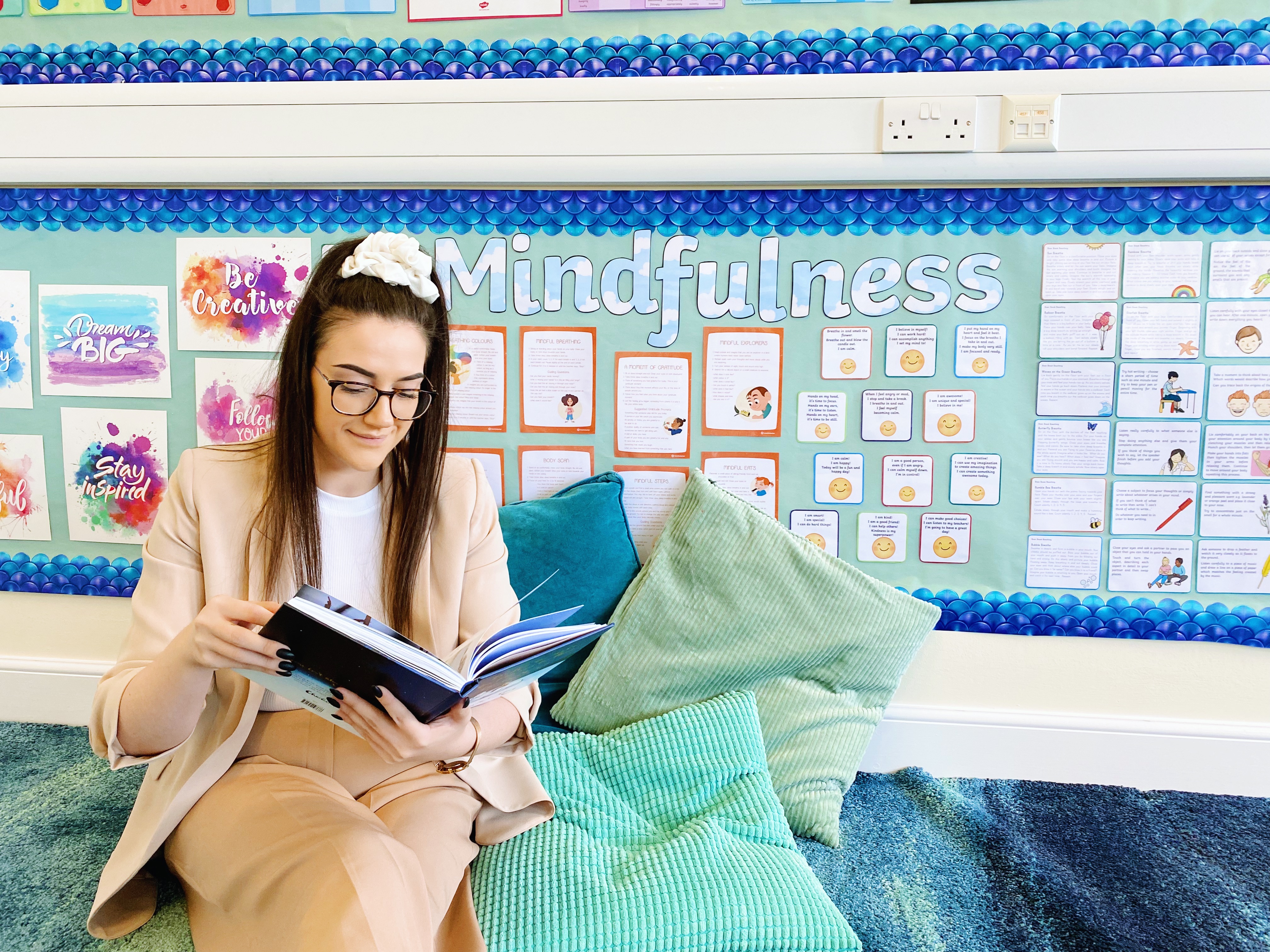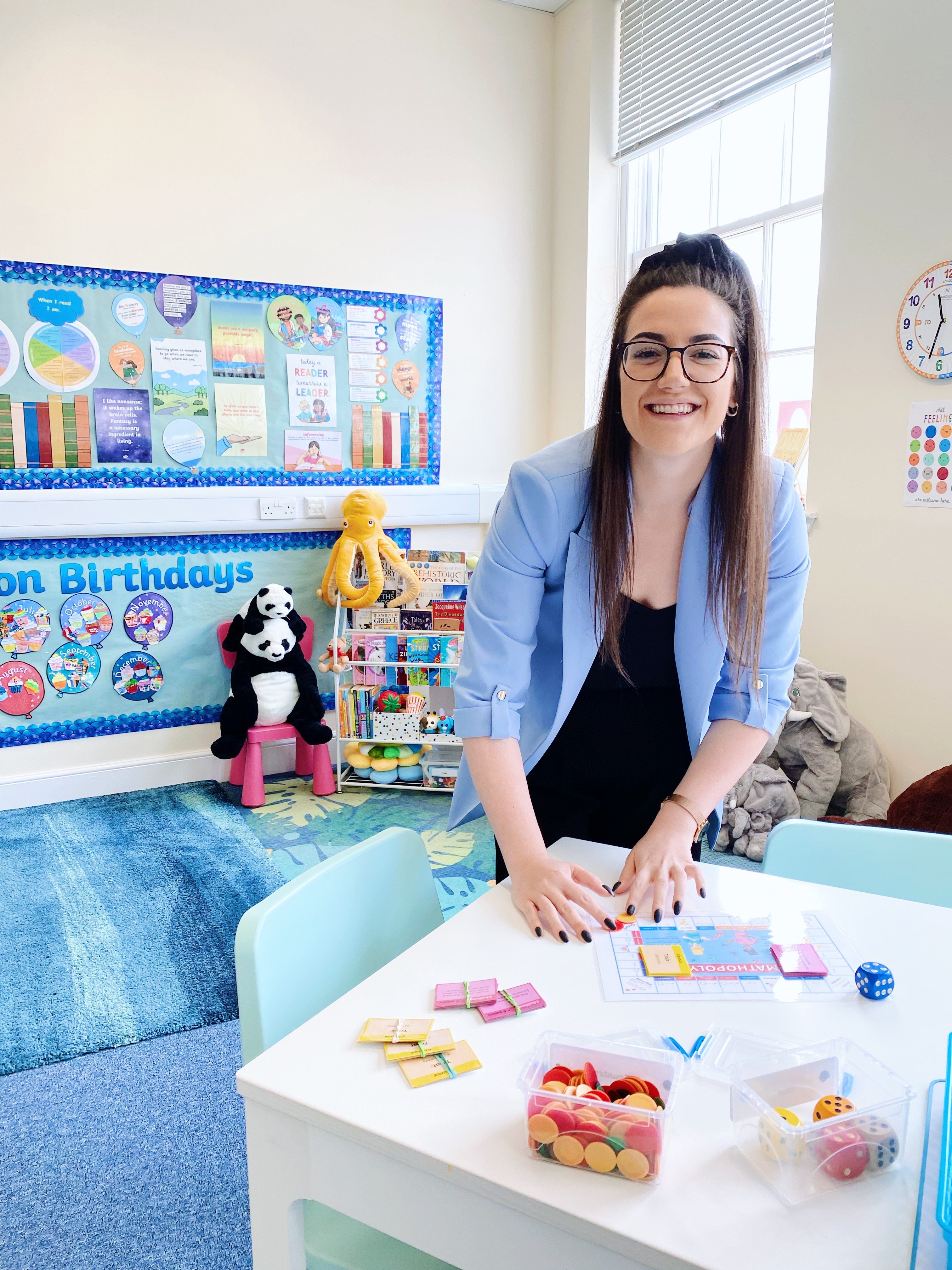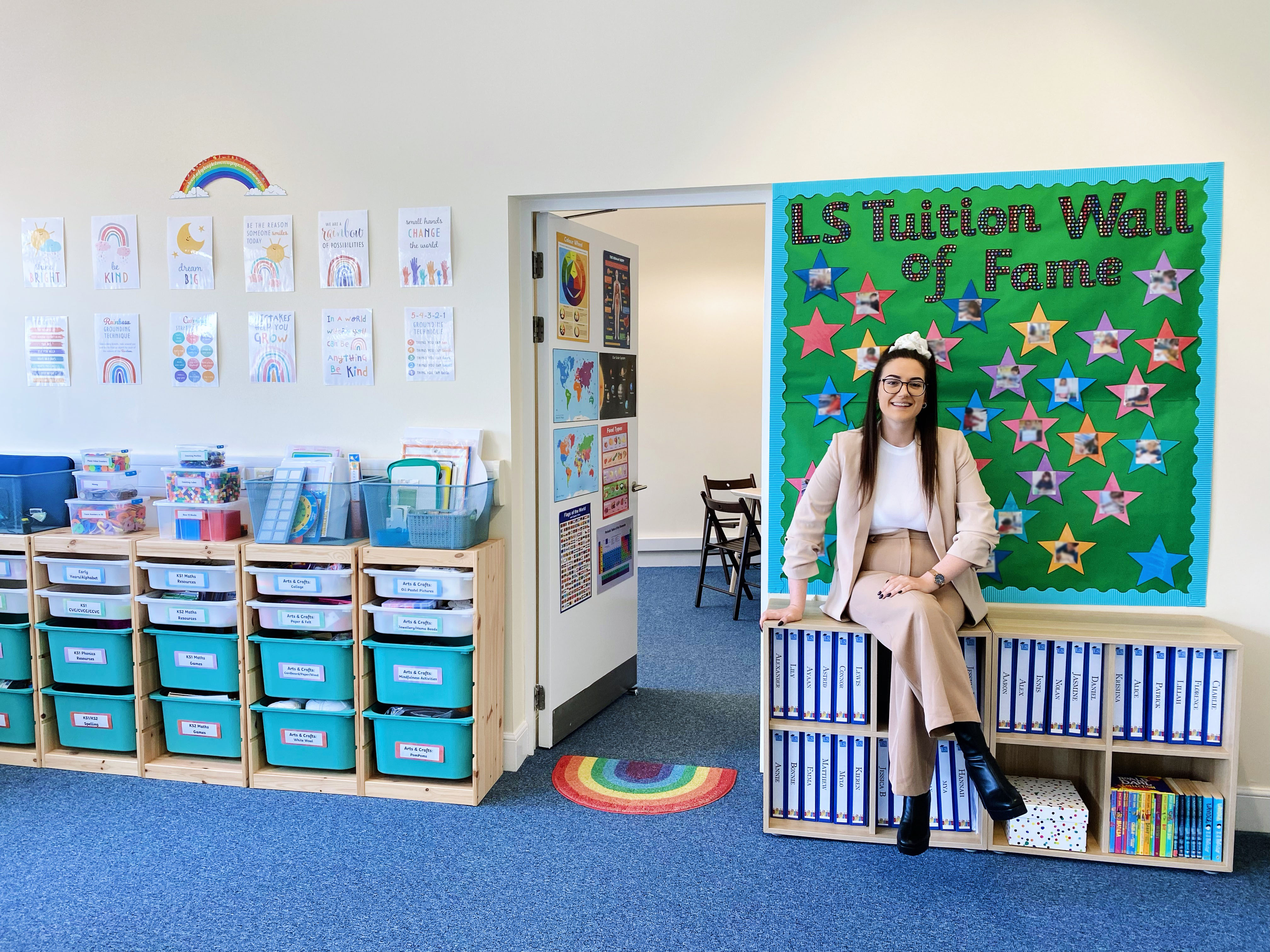Academic ability is important for building careers and financial success. But what about developing imagination and empathy, and learning how to express emotions and take care of ourselves? These are crucial parts of being a happy, healthy human being.
In recent years there has been an increased focus on children’s overall wellbeing. Holistic education teachers are concerned with nurturing the ‘whole child’, an approach which includes their emotional and physical wellbeing as well as academic ability.
What is a holistic education?
Think of holistic learning as a spider web where all ideas and information are connected. Holistic learners don’t separate subjects into boxes in their minds, rather every subject is a thread on the web that’s inextricably woven with other threads to create a bigger picture.
Holistic learning is the opposite of what could be called ‘compartmentalised learning’. When you learn in ‘compartments’ you mentally store information like you would organise folders in a filing cabinet.
It’s a methodical approach and works for some learners. However, when it comes to tests, compartmentalised learners need to ‘rifle’ through all the separate information folder by folder to arrive at an answer.
The holistic teaching method acknowledges that everything is connected. Instead of creating a distinct folder for English, Maths, Science, and Art, the holistic mind will relate a subject to various other points on the web. They can see links between maths and art for example, that helps them learn faster and absorb information at a deep level.
Holistic learners don’t need to ‘cram’ for tests because a web of information is at their fingertips. Subjects aren’t isolated in separate folders but are part of a greater, connected whole.

Why is holistic learning important?
The first 5 years are crucial to a child’s development. Milestones include speaking, singing, learning to balance, and naming colours. What and how children learn during these years can shape the trajectory of their lives.
A key principle of holistic learning is engaging a learner’s intellect, emotions, imagination, and body to comprehensively support their development. The more connections a child makes between different areas of their development the better.
When faced with a problem a child can ask, “How is this similar to what I already know?”
Instead of giving up they simply feel around their mental web for useful connections to help them answer a question or solve a problem. Often they’ll be able to arrive at solutions on their own, becoming imaginative problem solvers.
How to weave the web
So, how do we encourage holistic learning and building a ‘web’ of knowledge?
Firstly, by encouraging learners to make more associations between subjects. The compartmental learner may only have one or two associations (or ‘folders’) per subject. Every time they grapple with a new concept they have to create a new folder from scratch.
In time, holistic learners will be able to create hundreds of associations between a diverse range of ideas. This means they’ll be able to grasp new concepts quickly as they can draw parallels with information they’ve already absorbed.
For example, a holistic learner who knows the nursery rhyme ‘Three Blind Mice’ will be more successful at counting in a maths lesson.
But holistic learning isn’t just about improving numbers and literacy. A holistic approach focuses on the ‘whole child’. That means taking into account:
- Language development
- Socio-emotional development
- Imaginative play
- Physical development
- Cognitive development
Let’s look at more aspects of holistic education in detail.

How does a holistic approach nurture young learners?
1. By focusing on experiences
Holistic learning turns education into an experience. New concepts are introduced as part of an activity instead of copying examples from a textbook. Holistic learning engages the five senses to create memorable moments that deepen links in the learner’s mind. We focus on understanding, not memory.
Our example: We take children for ‘colour walks’ asking them to see how many red things they can find, from an autumn leaf to a postbox.
2. Customised learning
Teacher and child work together to find a pace of learning that suits the individual. A teacher with a holistic approach will focus on a child’s interests and use them to boost confidence in the classroom. Teachers can then link concepts from a subject a child is passionate about to one they struggle with to help them learn without feeling stressed or anxious.
Our example: For kids who like to play and get their hands dirty, drawing letters in the sand pit or shaping the alphabet from dough can help boost literacy
3. Holistic Learning supports neurodiverse students
For neurodiverse children, traditional methods of learning can pose a challenge because they struggle with working memory, overwhelm, and emotional dysregulation. Holistic teachers adapt to the learner’s needs by creating a ‘psychologically safe’ classroom where learners are given time to process information in manageable chunks.
Our example: We have a ‘quiet corner’ of the classroom where children can safely decompress and process their emotions.
5. Holistic learning focuses on the ‘whole child’
Early interactions have the power to shape the trajectory of our life. From others we learn how to interact with peers, parents, and teachers and how to navigate our emotions. Therefore, holistic learning places equal emphasis on social and emotional development as academic achievement. A holistic approach sees children as individuals with unique needs and personalities that require nurturing.
Our example: Meditation can give children a moment of peace to reflect and connect to their inner selves.
6. It takes a village
Holistic learning acknowledges that a child’s upbringing is a communal effort. Teachers, neighbours, friends, parents, and caregivers all play a critical role in a child’s early development and shouldn’t be separate from one another.
Holistic learning puts learner and teacher in a trusting partnership. Part of this trust comes from recognising the individual contribution every learner can make to their community.
Our example: Learners are encouraged to suggest classroom rules that are fair to everyone.
12. Play as learning
The best thing about play? It’s fun! Play is important to a child’s development, helping to hone fine and gross motor skills by engaging mind and body. Play is also creative, fostering a rich imagination which is beneficial in and out of the classroom.
Our example: Our ‘Imagination Station’ lets children unleash their creativity.
One-to-one tuition and holistic education
How do you feel when a colleague or your partner gives you their undivided attention? We bet the answer is “pretty good”!
When someone gives us their full attention we feel seen and valued. As a child, receiving the undivided attention of a caregiver or teacher amplifies that good feeling. Children are more likely to feel motivated and enthusiastic about learning if they really connect with their teacher.
This connection is vital in the key stages of a child’s development as it shows them that they are valued individuals with their own needs, personalities, and interests.
In today’s busy classrooms it’s harder for teachers to give children their full, undivided attention. This might mean your child isn’t given enough time to learn a subject they find challenging and can prevent them from speaking up in class.
On the other hand, one-to-one tuition means higher quality interactions with their teacher which boosts a child’s confidence and motivation to learn. One-to-one also helps neurodivergent learners because tutors take a student’s individual needs and challenges into account.
With the holistic approach it’s not just your child’s academic ability that flourishes. Read on to discover more benefits of a holistic, one-to-one education.

The benefits of one-to-one education
1. Attention given to individual needs
Everyone learns at different speeds and has subjects they prefer. Focussed one-to-one time lets the tutor discover areas where your child struggles in order to create a customised learning plan. In larger classrooms this element is missing because the teacher has to prioritise the needs and pace of the classroom as a whole.
2. Fewer distractions
Distractions are annoying. Even worse for young minds trying to learn. An over stimulating environment can be especially challenging for learners with ADHD or autism. One-to-one tuition lets children learn in a peaceful, low-stress environment to boost their concentration.
3. Gentle challenges
On the other hand, your child might be understimulated. If they’re streaks ahead of their classmates, one-to-one tuition can provide an energising challenge. Experienced tutors quickly assess the ability and level of their students to plan lessons accordingly. Sometimes a challenge is all that’s needed to provide an overall motivation boost.
5. Help catching up
Short, focussed, one-to-one sessions or summer schools quickly improve your child’s academic ability and confidence if they’ve fallen behind. A tutor is there to offer support, encouraging your child that they’re capable of achieving their potential.
6. Growing confidence
Confident kids are happy kids.
If your child’s performance is affected by low self-esteem, the undivided attention of a tutor can help them see their progress in a positive light. With improved confidence, children can start to take control of their own learning. They’ll speak up more in lessons and find the self-esteem to interact with their classmates.
7. Improved organisation
Disorganised children are poor performers. An experienced tutor can offer one-to-one instruction on how they can best organise their coursework and study time. They’ll help your child feel prepared and less anxious for each lesson and upcoming tests. As your child’s organisational habits become second nature they’ll find lessons fun rather than an uphill battle. And feeling prepared will give them the confidence and motivation to take charge of their learning.
Lydia’s Tuition: Holistic, one-to-one education in Edinburgh
Children flourish when they feel seen and supported.
If your child is struggling at school they might benefit from a teacher who sees their unique contribution to the classroom. At LS Tuition we see every child as an individual and understand that all learners face different challenges — we’re also adept at spotting hidden talents!
We’ll meet your child exactly where they are in their learning journey with:
- An empathetic team of qualified Primary School teachers ready to offer undivided attention
- Personalised learning plans and tailored teaching for ages 4-13, including Early Years, Key Stage 1, and Key Stage 2
- Holistic learning that develops the ‘whole child’ from academic ability and cognitive development, to caring for children’s social, emotional, and physical wellbeing
- A holistic approach that creates connections across subjects to empower learners. Quickly they’ll start to build their ‘web’ of knowledge which will be the foundation of lifelong learning
If your child comes home from school feeling deflated or worries about being left behind, we can help them see the ‘big picture’, boost their confidence, and fall in love with learning again.
The first step is as easy as booking a call.
We’ll quickly assess where your child is at in their learning development and decide how we can best support them.
Book a call today or read our blog to learn more about holistic education.

